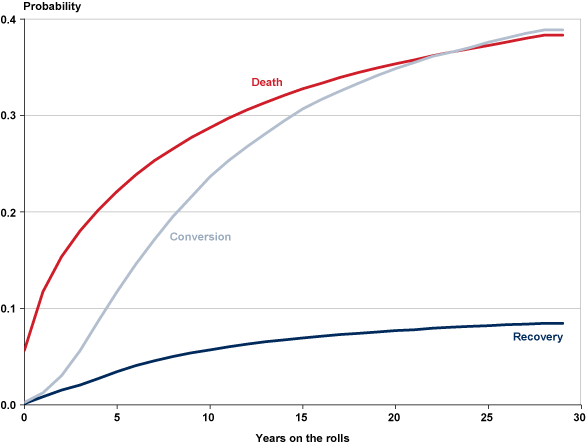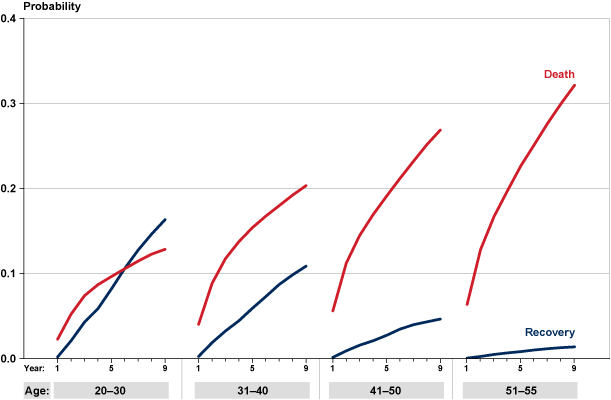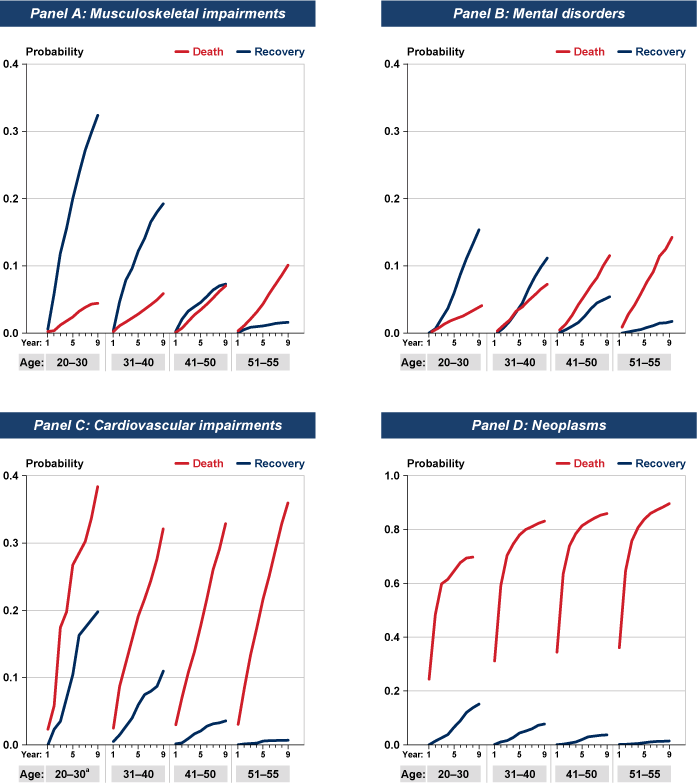From What Factors Explain the Drop in Disability Insurance Rolls from 2015 to 2019? by Siyan Liu and Laura D. Quinby for the Center for Retirement Research at Boston College:
I'll pull out some interesting charts from this paper over the next few days.In 2015, the number of individuals receiving Social Security Disability Insurance (DI) benefits began to drop for the first time in two decades. This drop was caused by a wave of terminations, as beneficiaries aged into the Old-Age and Survivors Insurance (OASI) program, combined with a steep decline in the incidence rate (the number of new DI awards relative to the insured population). ...
The paper found that:
- A strong economy accounted for about half of the drop in the incidence rate.
- Policy changes – specifically the retraining of Administrative Law Judges – also accounted for about half the drop.
- Population aging put slight upward pressure on the incidence rate.
- In terms of the total number on the disability rolls, the impact of aging on terminations far exceeds its impact on new awards.
The policy implications are:
- The time may have come to somewhat rebalance the goals of DI from encouraging labor force participation to protecting vulnerable people.
- Congress may want to consider merging the DI and OASI trust funds. ...






